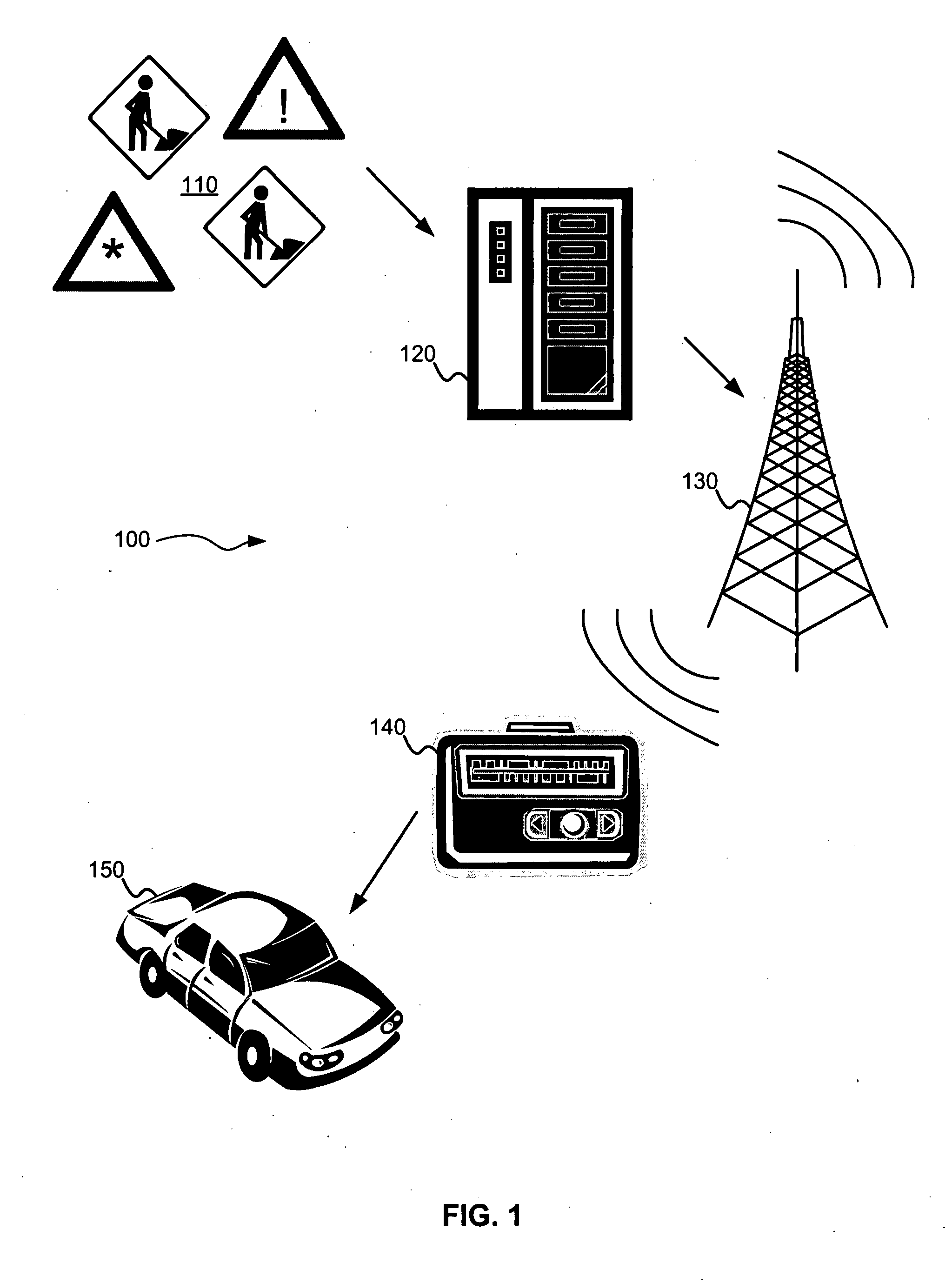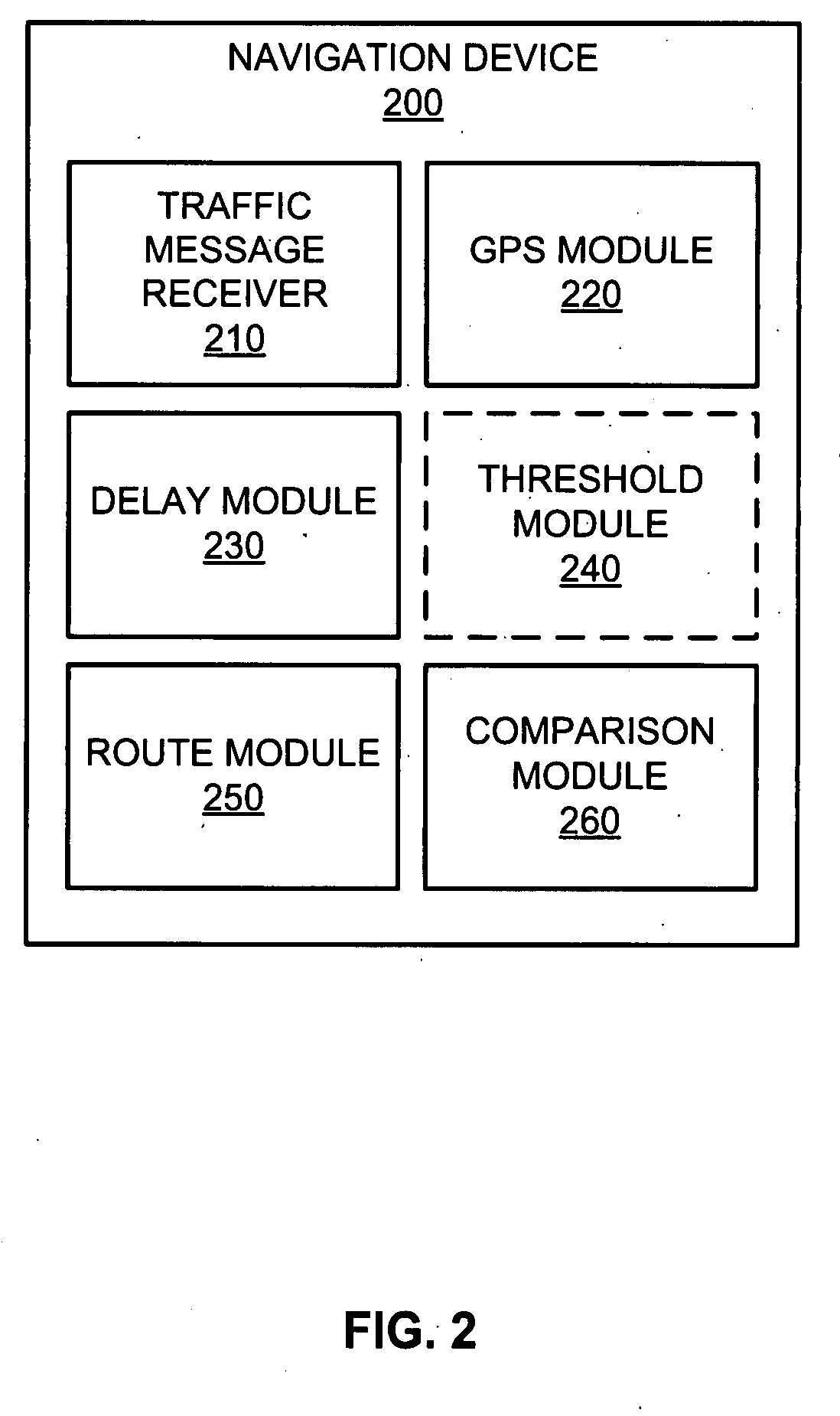Route calculation based on traffic events
a technology of route calculation and traffic events, applied in the field of global positioning systems, can solve the problems of requiring more time to travel and delay travel on the roadway
- Summary
- Abstract
- Description
- Claims
- Application Information
AI Technical Summary
Benefits of technology
Problems solved by technology
Method used
Image
Examples
Embodiment Construction
[0017]A Global Positioning System (GPS)-enabled navigation device is configured to determine its current location and provide an initial route from an origin location to a destination location. The navigation device receives traffic messages each containing an event code and a location code corresponding to a traffic event. The navigation device is configured to determine whether any of the received traffic events are on remaining segment(s) of the initial route based on the location code in the corresponding traffic message and the current location.
[0018]If any traffic events are on remaining segment(s) of the initial route, the navigation device is configured to determine a traffic event delay caused by the traffic event based on the event code in the traffic message. In some embodiments, the traffic event delay is also based on the location code in the traffic message. A travel delay is calculated by summing traffic event delay(s) corresponding to each of the traffic events along...
PUM
 Login to View More
Login to View More Abstract
Description
Claims
Application Information
 Login to View More
Login to View More - R&D
- Intellectual Property
- Life Sciences
- Materials
- Tech Scout
- Unparalleled Data Quality
- Higher Quality Content
- 60% Fewer Hallucinations
Browse by: Latest US Patents, China's latest patents, Technical Efficacy Thesaurus, Application Domain, Technology Topic, Popular Technical Reports.
© 2025 PatSnap. All rights reserved.Legal|Privacy policy|Modern Slavery Act Transparency Statement|Sitemap|About US| Contact US: help@patsnap.com



